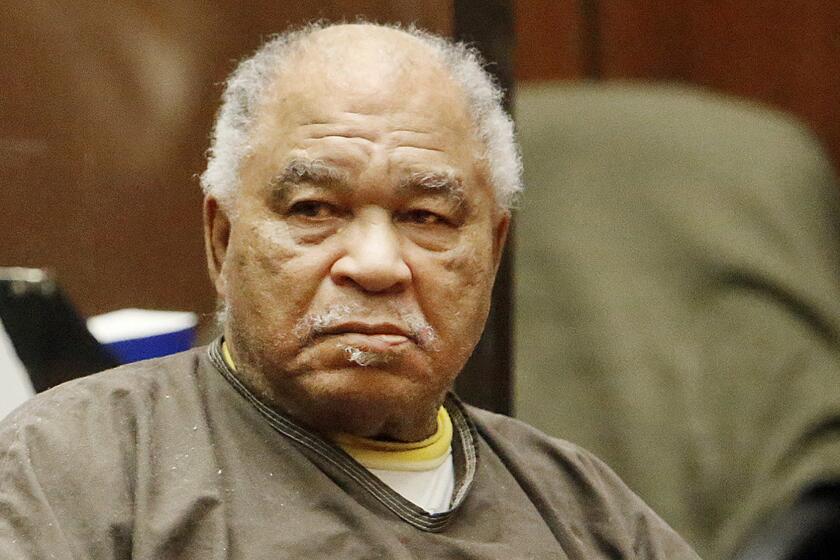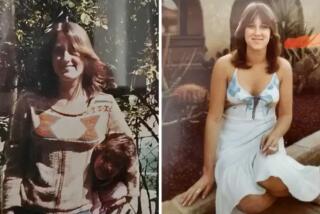The confessions of a prolific serial killer have left L.A. detectives chasing ghosts
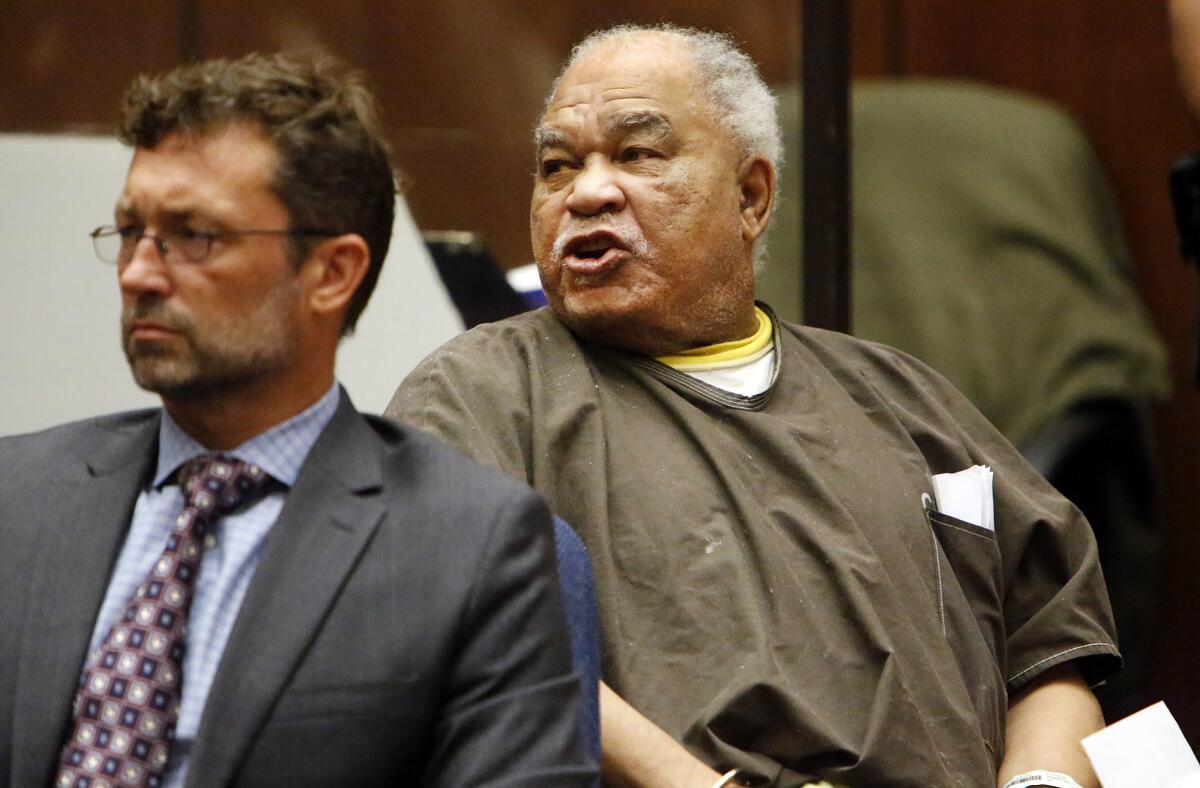
- Share via
As Sam Little spilled details of the 93 murders he claimed to have committed across the U.S., the toll in Los Angeles mounted.
In hundreds of hours of interviews with investigators, the former boxer admitted to killing dozens of women, almost all by strangulation, from 1970 to 2005 as he moved around the U.S. The scraps of detail he offered — a year, an intersection, a landmark — left the FBI and local police scrambling to fill in the blanks and corroborate his chilling confessions. Twenty of his victims had been in the city of Los Angeles or elsewhere in L.A. County, Little claimed.
Authorities say they’ve confirmed that Little committed about two-thirds of the murders, but they remain flummoxed by 31 of them. Of those, 16 allegedly occurred in L.A. County, where he was ultimately brought to justice.

With Little’s death last year in a California prison and the lead investigator’s retirement next month, detectives are launching a public push for answers. Investigators with the Texas Rangers and FBI released details Tuesday of Little’s confessions to the outstanding murders. Beyond the people he claims to have killed in L.A. County, Miami is the only metropolitan area with multiple open cases linked to Little. Investigators are also seeking to close cases in Atlanta, New Orleans, Las Vegas and Cincinnati, among other places.
“We are hoping to get the public’s help, jog loose a detail, something that helps us link up these cases,” said James Holland, the Texas Ranger whose interrogations of Little ultimately led to his confessions in 2018.
Holland said he is hopeful Little’s sometimes vivid descriptions of crime scenes and the people he targeted will trigger a memory for a retired police detective or a victim’s relative. In Los Angeles, for example, Little claimed he strangled a Black prostitute nicknamed T-Money and then stashed her body under a mattress in an alley. In 1996, he said, he left a white prostitute half-clothed in a bathtub in a vacant house near Slauson Avenue. And during rioting in 1992, possibly over the Rodney King beating, he said, he dumped the body of a Black woman who wore a turban behind a bank or loan company in Compton during a rain shower.
Authorities are seeking the public’s help to identify 16 women murdered by serial killer Sam Little in the L.A. area in the 1980s and ‘90s.
Despite Little’s candor, LAPD investigators say tying his confessions definitively to any of the thousands of unsolved murders the agency has on its books is difficult. Little claimed he killed sporadically in L.A. from 1987 to 1996, a period when the city’s annual homicide total sometimes surpassed 1,000. And his frequent targeting of Black prostitutes and women with drug addictions in South L.A. mirrored the profile of other serial predators in the city at the time.
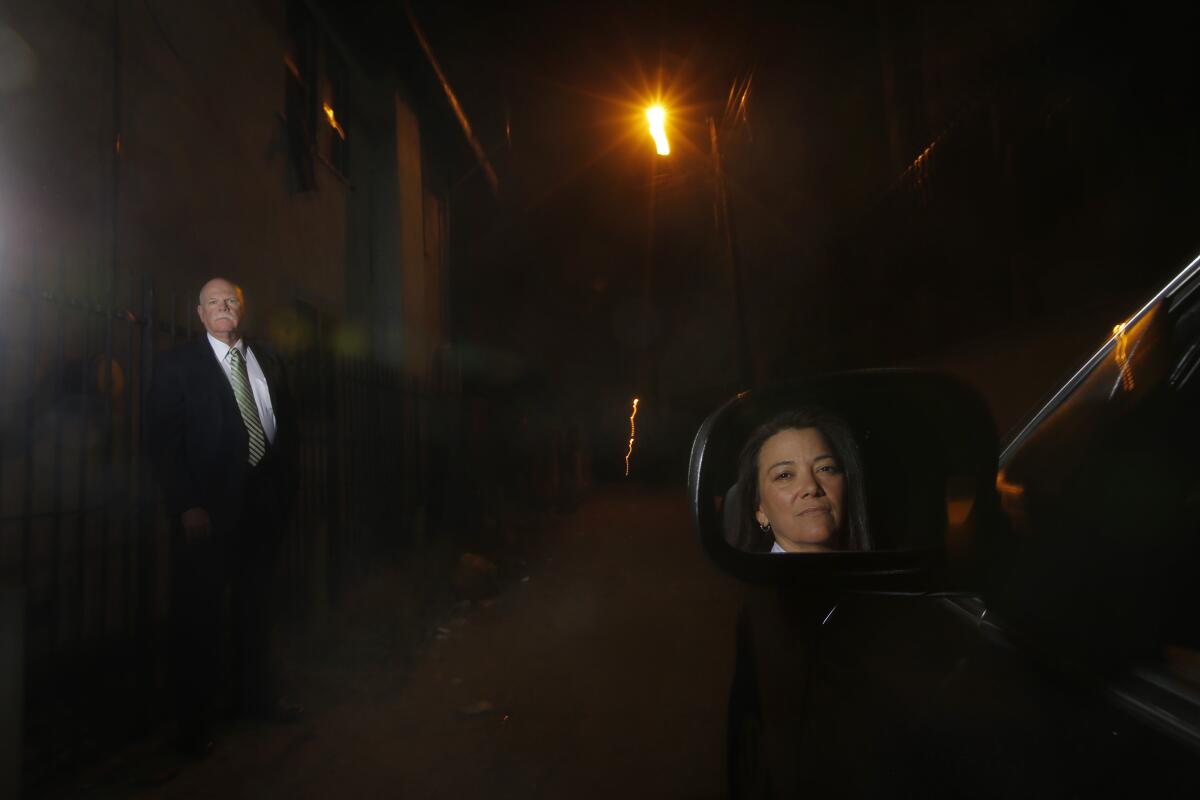
Mitzi Roberts, the LAPD homicide detective whose investigation led to Little’s conviction in 2014 for three murders, recalled how two years ago she drove the confessed killer around areas of the city and county where he claimed to have murdered people, hoping it might pry loose clues.
“He was only able to take us to five locations and he was kind of confused about the rest of the stuff,” she said. “We weren’t able to get any additional information to help us narrow down to a specific victim.”
Roberts noted that Little’s confessions were also hard to verify, in part, because while he could be exceedingly detailed in some ways, he was frustratingly vague in others. In one case, according to summaries released by the Rangers and FBI, Little said he killed a woman in a garage near the intersection of 72nd and Figueroa streets, but wasn’t sure if the murder happened in 1987, 1993 or 1995.
In other cases, Roberts said, Little described dumping bodies “way out in the county,” leaving the detective daunted by the likely prospect that other police agencies have records about unsolved murders he committed in the city. The killing of Alice Duvall underscores that problem. Little initially said he killed Duvall in the city of Los Angeles, but in fact it was in Long Beach. Michael Hubbard, a homicide detective in that city’s police department, said Duvall’s strangled body was discovered in an industrial area, and DNA evidence tied Little to the case in 2020.
Must Reads: The inside story: How police and the FBI found one of the country’s worst serial killers
The FBI analysts sat mutely, listening intently to the scratchy audio feed from an interview room across the hall.
Roberts also expressed concern that Little was “open to suggestion” during interviews, noting that he only ever made mention of a killing during riots following the Rodney King verdict after her partner raised the topic.
“It was hard to determine whether that was his memory or it was his memory after it was suggested,” she said.
Sgt. Robert Martindale of the L.A. County Sheriff’s Department, who has been investigating Little’s alleged killings, believes four occurred in sheriff’s jurisdiction, but he is not optimistic he will ever solve them. As the county has undergone dramatic development over the last few decades, Little’s crime scenes may no longer exist, Martindale pointed out.
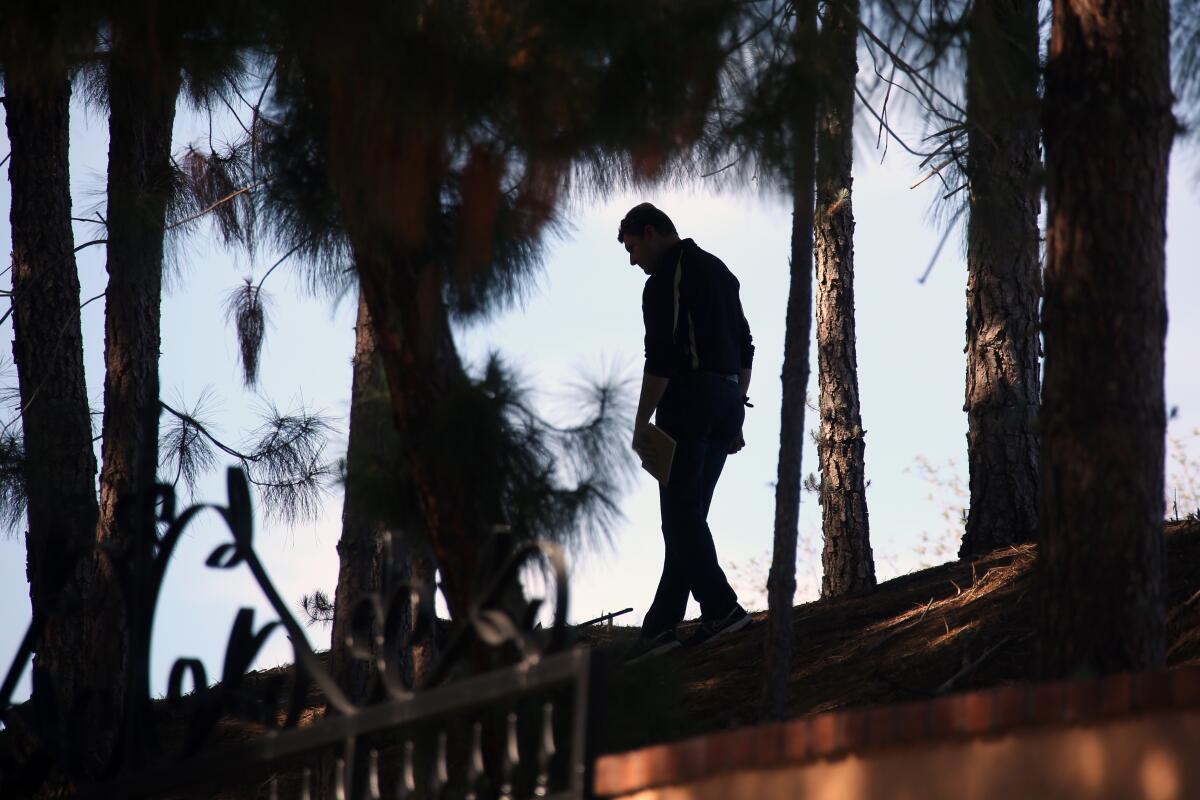
Martindale was with Roberts when she drove Little around and said that during the tour Little struggled to pinpoint murder sites in the county because so “many landmarks had changed.”
“What was then a field is now a strip mall or apartment complex,” Martindale said.
Missing case files and evidence are another problem, he said. In one instance, a colleague had a photograph he had taken of a victim while on patrol in the 1980s or early 1990s that appears to match a murder that Little said he committed.
Little was “intrigued by” the photo, which depicted a victim in tall grass, Martindale said. But the investigator has not been able to find any reports documenting the slaying. He said he believes it may have occurred in Compton before the Sheriff’s Department took over policing that city.
Martindale believes he identified one of Little’s killings — in Rowland Heights — but said he cannot find the forensic evidence that would link the serial killer to the crime. “It is difficult to impossible to solve that,” he said, “with Little gone and the evidence having been disposed of.”
Little’s death ended a life that saw him slip in and out of law enforcement’s crosshairs as he racked up a deadly ledger across the country.
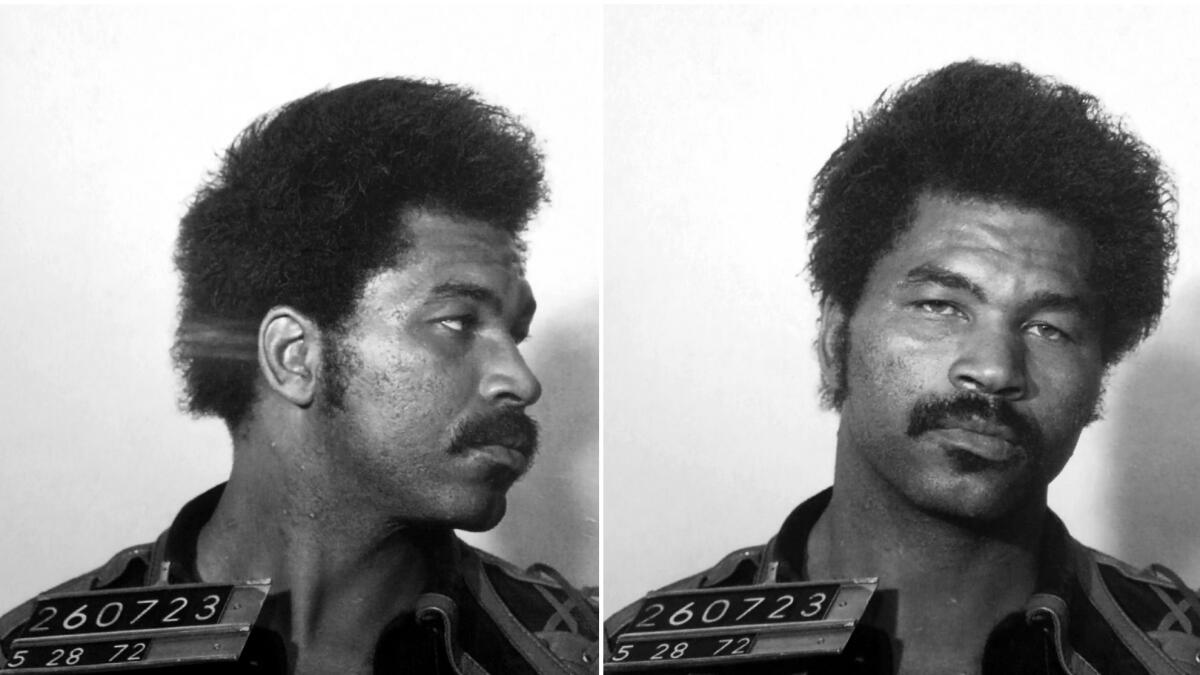
Operating largely in the Southeast and California, Little was able to stay undetected for decades partly because of his choice of victim. Many of the lives he claimed belonged to “women that wouldn’t be missed,” as Roberts once put it. His crimes rarely elicited a public outcry, significant media attention or a major police response.
Although Little is believed to have attained sexual gratification from killing, Roberts said he rarely sexually assaulted his victims. As a result, he was less likely to leave DNA evidence at a crime scene. And even in cases in which Little’s DNA was found on a woman’s body, Roberts said his choice of victims could make it hard to pin a killing on him since genetic material from multiple men was sometimes found on the bodies of women working as prostitutes.
Little was arrested for murder in Florida in the early 1980s but acquitted. He was convicted of assaulting a woman in San Diego in the 1980s but was released from prison in 1987. He would kill two women in Los Angeles that same year.
Little was finally captured in 2012 when Roberts, who now leads the LAPD’s cold case unit, obtained a warrant for his arrest based on DNA evidence. While Roberts and others strongly believed Little had killed far more than the three victims whose deaths he was convicted of, Little stonewalled their interview attempts and, according to Roberts, developed a particular hatred for her.
Instead, it was Holland, the Texas Ranger, who finally got Little to begin talking in 2018. An interrogation expert, Holland played off Little’s loathing for the LAPD investigators who caught him and his derision at being called a rapist. The Ranger was able to build a rapport with the by-then elderly man, sparking the conversations that led to the closure of more than 60 open murder cases throughout the country.
Holland expressed frustration with the number of open cases in Los Angeles.
“Am I disappointed in the results out of L.A.? Yes. Little’s confessions have proven to be accurate, and the majority of his details have remained consistent over more than two years of interviews,” he said. “The victims are there, the sexes, races, manner of death, descriptions of locations where he met the victims, where he killed the victims, where he discarded the victims’ bodies are all accurate. They just need to be found, and that is no simple task in a city like Los Angeles, but it can be done, and I truly believe releasing this information will get it done.”
Holland urged anyone with information about the killings that Little described to call 800-CALL-FBI.
More to Read
Sign up for Essential California
The most important California stories and recommendations in your inbox every morning.
You may occasionally receive promotional content from the Los Angeles Times.

